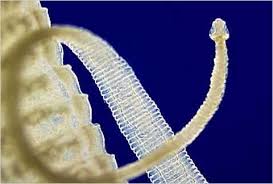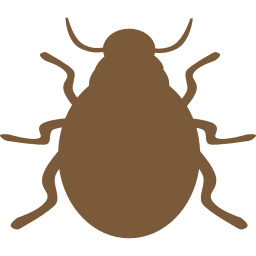Parasite Treatment
Call NowThe parasites that affect your pets are classified as being either external or internal. External parasites are those who live and can sometimes be seen outside of your pet’s body. Internal parasites live inside your pet, making them invisible to the eye and harder to notice.
Fleas
Fleas can cause problems for pets ranging from minor to life-threatening. Not only can these parasites cause severe itching, irritation, and allergies, but they can also transmit tapeworms and diseases. Fleas can infest dogs, cats, ferrets, mice, and rats. And fleas don’t just stay on pets; they can bite people, too.
‘Flea dirt’ is excrement of the parasites and an indication that your pet has fleas. You will be able to see these brown or black specks, especially if your pet is white.
You don’t want these blood-sucking parasites on your pet or in your home. We can help keep them away or help you get rid of them if they’ve already found their way inside. Call us to find out how to eliminate and control fleas or to start your pet on a preventive today.
The Cats of Australia offers an extensive guide on how to eliminate fleas from your home.
Ticks
Ticks are becoming more and more prevalent in North America, and they’re now being found in areas where people and pets didn’t previously encounter ticks. These parasites aren’t just a nuisance; they can cause serious—and sometimes deadly—diseases, including Lyme disease, Rocky Mountain spotted fever, babesiosis, ehrlichiosis, and tick paralysis. Contact us immediately if your pet starts coughing or develops joint pain, trouble breathing, fever, weakness, or loss of appetite, weight, energy, or poor coordination.
“Currently, the risk for Lyme disease in Saskatchewan is low but not zero. The province maintains a surveillance system to monitor all ticks in the province. Many hundreds of ticks are sent in by the public through public health departments and the University of Saskatchewan for identification and testing.
The great majority of ticks (>97%) are the American dog tick, sometimes called “wood ticks.” This species does not carry the agent responsible for causing Lyme disease.
A few ticks (0.3%) are the black-legged tick, or “deer tick,” and are occasionally found in the province. These are most likely carried to Saskatchewan by migrating birds, and a small percentage of these may be infected with the agent that causes Lyme disease. The black-legged ticks do not appear to have established themselves in Saskatchewan at this time.” Source
Keep ticks off your pet by keeping your dog or cat on a tick preventive. Even indoor-only pets are at risk because ticks can hitch a ride inside on your clothing or shoes. Tick preventives are safe and effective at controlling ticks and the diseases they carry.
Check your dog for ticks every day, especially during tick season: spring, summer, and fall, or year-round in warmer climates. Brush your fingers through their fur, applying enough pressure to feel any small bumps. Be sure to check between your dog’s toes, behind ears, under armpits, and around the tail and head, too. If you do feel a bump, pull the fur apart to see what’s there. A tick that has embedded itself in your dog will vary in size, something from the size of a pinhead to a grape, depending on how long it has been attached. Ticks are usually black or dark brown in color but will turn a grayish-white after feeding in what’s referred to as an engorged state.
Don’t panic if you find a tick on your dog or cat, even if your pet is on a preventive. Some preventives kill ticks after they’ve come in contact with your pet. Removing embedded ticks is a delicate operation because it’s easy for a piece of the tick to break off and remain in your dog’s skin if done improperly. Follow the removal steps below or consider bringing your dog to a veterinarian who can safely perform the task and, possibly, show you how it’s done. Infection can occur after 24 hours, so if you find a tick on your dog, remove it right away. Always wear rubber gloves to protect yourself from possible injury or infection.
- Grasp the tick very close to the skin with a pair of fine-tipped tweezers.
- With a steady motion, pull the tick’s body away from the skin. Avoid crushing the tick to prevent infection.
- After removal, clean your dog’s skin with soap and warm water and dispose of the tick by placing it in alcohol or flushing it down the toilet.
Mites
Ear mites are tiny parasites that live out their life cycle inside your pet’s ears. Although they are microscopic, the presence of dark brown, crusty or waxy coffee ground-like discharge is often the most obvious sign of infestation, along with scratching at the ears or a head tilt. A sample of this discharge is taken from the ear with a swab and examined under a microscope for the presence of mites. Treatment involves a thorough cleaning of the ears and a prescription for medicated ear drops.
Skin mites, also known as Cheyletiella or “walking dandruff,” feed off the keratin layer of your pet’s skin. Skin mites can cause itching, lesions, peeling skin, and a dusting of dry skin (dandruff). This itchy condition is diagnosed by taking a sample of the skin through a skin scraping and examining it for mites. Treatment is similar to that of fleas – along with cleaning your home, your pet will need to be bathed frequently to remove the dry, scaly skin. Oral medications, as well as medicated rinses, are commonly used in addition to bathing.

Roundworm
Roundworms, or Ascarids, are white ‘spaghetti-like worms that live within your pet’s gastrointestinal tract. These worms are very common and can cause a variety of symptoms, including vomiting, diarrhea, nausea, weight loss, lethargy, and abdominal swelling. Animals can acquire the parasite through ingestion of eggs found in contaminated feces, food, water, or vomit and can pass the parasite along to their offspring through the mother’s milk or in vivo.
Hookworms
These worms can be deadly to young animals as they will leave bite sites within the small intestine and cause internal bleeding. Luckily, the symptoms of a hookworm infestation are typically easy to notice. An animal infected with hookworms will look malnourished and generally unhealthy. The lining of their nostrils, ears, and lips will often look pale, and they may have tarry or dark-bloody diarrhea or constipation. Hookworms are acquired through the milk of an affected mother, by ingestion of contaminated food, water, vomit, or feces, or by larval penetration of the skin from a contaminated environment.

Tapeworm
Tapeworms are easily identifiable as they literally look like a strip of tape with segments that resemble cucumber seeds and can reach a length of several feet long. These worms absorb nutrients through their cuticle and therefore do not have a mouth. The head hooks itself onto the lining of your pet’s small intestine and continues to grow as it leeches nutrients, increasing its surface area. The rice-like segments will break off and make their way out of your pet. Pet owners often see these segments on their pet’s anus or stool. These segments are egg sacks that release hundreds of eggs onto your pet’s coat once it dries. Fleas eat these eggs and infect others with animals when the tapeworm-carrying fleas are eaten.

Whipworm
Whipworms thread-like with a thicker appearance towards the end, giving them a whip-like appearance. They are known for causing diarrhea which may sometimes contain mucous or blood. Animals with a heavy burden may develop anemia or anorexia. These worms live in the last part of the small intestine and the last part of the large intestine and will fasten themselves to the gut. They are transmitted through the ingestion of food, water, vomit, and feces containing whipworm eggs.
Veterinary care delivered with compassion for the pets of Saskatoon for over 35 years.
Acadia Veterinary Clinic and Pet Rehab Centre is a full-service veterinary hospital in Saskatoon, SK. We're pleased to provide compassionate veterinary care and pet rehabilitation. We want to offer the best care for your best friend!
Contact Info
Hours
Mon-Fri: 8:30am-5:30pm
Sat: 8:30am-3:00pm
Sun: Closed
Location
3421 8th Street East #4
Saskatoon, SK S7H 0W5
Click here for directions.


